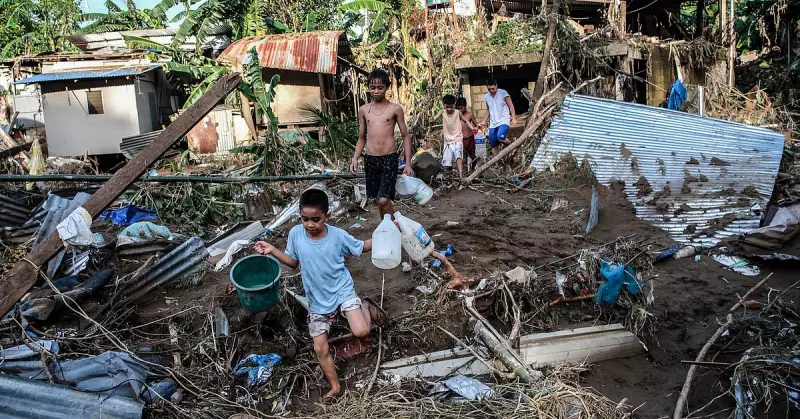
The skies may have cleared, but the battle is just beginning for thousands of Cebu residents as they confront the devastating aftermath of Typhoon Tino. What started as another weather disturbance quickly escalated into a catastrophe that would test the resilience of entire communities across the province.
A Trail of Destruction
From coastal villages to urban centers, Tino left no stone unturned. Homes once filled with laughter now stand waterlogged, their contents floating in murky floodwaters. Streets that buzzed with daily activity have transformed into rivers of debris, making transportation nearly impossible in many areas.
The agricultural sector suffered catastrophic losses, with rice fields and vegetable farms completely submerged. Farmers who invested their life savings into crops now stare at ruined harvests, wondering how they'll recover their losses and feed their families.
Human Stories of Survival
In the hardest-hit barangays, residents share harrowing tales of survival. "The water rose so fast we had to break through our roof," recalls Maria Santos, a mother of three from Consolacion. "We lost everything - documents, appliances, even our children's school supplies."
Emergency evacuation centers have become temporary homes for hundreds of families, each with their own story of loss and resilience. Despite the chaos, community spirit shines through as neighbors share whatever little they have salvaged.
Government Response and Challenges
Local government units have mobilized rescue teams and relief operations, but the scale of damage presents unprecedented challenges. Critical infrastructure damage has hampered response efforts, with many areas remaining inaccessible due to flooded roads and damaged bridges.
Power outages continue to affect large portions of the province, complicating communication and relief coordination. Emergency responders work against time to restore basic services while distributing essential supplies to affected families.
Immediate Needs and Long-term Recovery
The most urgent requirements include:
- Clean drinking water and food supplies
- Medical assistance and sanitation facilities
- Temporary shelter materials
- Clothing and basic household items
Beyond immediate relief, the road to recovery appears long and challenging. Rebuilding damaged infrastructure and restoring livelihoods will require coordinated efforts between government agencies, private organizations, and community groups.
A Community Rises Together
Amid the devastation, stories of hope emerge. Volunteers from less-affected areas have organized donation drives, while local businesses have opened their doors as temporary shelters. The Filipino spirit of bayanihan - community unity - proves stronger than any typhoon.
As Cebu begins the painstaking process of picking up the pieces, one thing remains clear: the journey to normalcy will be long, but no one will walk it alone. The resilience demonstrated in these challenging times serves as a testament to the enduring strength of the Cebuano spirit.





